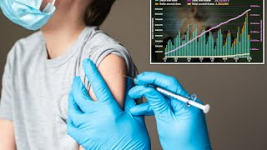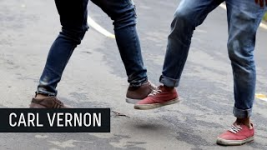COVID-19 'Pandemic'
- Thread starter Ocean Breeze
- Start date
You are using an out of date browser. It may not display this or other websites correctly.
You should upgrade or use an alternative browser.
You should upgrade or use an alternative browser.
Ignore government and book your summer holiday, Ryanair boss says
Author of the article:Reuters
Reuters
Sarah Young and Laurence Frost
Publishing date:Mar 24, 2021 • 2 minutes ago • 2 minute read • comment bubbleJoin the conversation
A Ryanair Boeing 737-800 airplane takes off from the airport in Palma de Mallorca, Spain, July 29, 2018.
A Ryanair Boeing 737-800 airplane takes off from the airport in Palma de Mallorca, Spain, July 29, 2018. PHOTO BY PAUL HANNA /REUTERS
Article content
LONDON — British tourists should go ahead and book foreign holidays despite government warnings not to, Ryanair boss Michael O’Leary said on Wednesday, as the low-cost carrier announced plans to run 80% of its peak summer capacity.
Vaccine rollouts will tame COVID-19 and reopen travel in time for beach holidays, O’Leary predicted during a news conference in which he also dismissed recent advice from UK ministers that foreign travel is likely to remain off-limits.
“I don’t frankly pay too much attention to it,” he said, citing the U.K.’s “spectacularly successful vaccine program” that aims to reach the entire adult population by late July.
Britain’s lead on vaccinations has put UK tourists at the centre of the travel industry’s summer hopes – dented by recent setbacks to immunization campaigns in mainland Europe and a recent surge in infection rates.
O’Leary reported a surge in bookings from Britain and Germany, in comments that contrast with the gloom besetting the industry as it faces the risk of a second ruined peak season.
Advertisement
STORY CONTINUES BELOW
This advertisement has not loaded yet, but your article continues below.
Article content
Airline and travel shares have fallen this week since the U.K. toughened its stance, but regained some ground on Wednesday with TUI up 7.8%, British Airways owner IAG 5.5% higher, easyJet up 3% and Ryanair 0.6%.
Ryanair staged separate online press briefings on its U.K., Spain and Greek travel schedules in what O’Leary said was an attempt to encourage consumers to book.
The Irish budget airline announced 26 new destinations in Greece, Portugal and Spain and plans to operate a total of 2,000 weekly flights on 400 summer routes.
Vaccinations will have COVID-19 under control across the region by summer, O’Leary forecast, and Britain would then have no grounds to bar foreign trips.
“If you’re fully vaccinated, I’d be very surprised if there was any legal basis for the U.K. government preventing people traveling on holidays to other European countries,” he said.
“It is very difficult to persuade the U.K. population to sit at home, or holiday at home, when everybody’s been vaccinated.”
Britain has banned foreign travel until at least May 17, except for essential work, education or health reasons. Consumers should “hold off booking international travel,” social care minister Helen Whately said earlier this week.
Ministers are due to review that position in April and “hope to be saying some more by April the 5th,” Prime Minister Boris Johnson said on Tuesday.

 torontosun.com
torontosun.com
Author of the article:Reuters
Reuters
Sarah Young and Laurence Frost
Publishing date:Mar 24, 2021 • 2 minutes ago • 2 minute read • comment bubbleJoin the conversation
A Ryanair Boeing 737-800 airplane takes off from the airport in Palma de Mallorca, Spain, July 29, 2018.
A Ryanair Boeing 737-800 airplane takes off from the airport in Palma de Mallorca, Spain, July 29, 2018. PHOTO BY PAUL HANNA /REUTERS
Article content
LONDON — British tourists should go ahead and book foreign holidays despite government warnings not to, Ryanair boss Michael O’Leary said on Wednesday, as the low-cost carrier announced plans to run 80% of its peak summer capacity.
Vaccine rollouts will tame COVID-19 and reopen travel in time for beach holidays, O’Leary predicted during a news conference in which he also dismissed recent advice from UK ministers that foreign travel is likely to remain off-limits.
“I don’t frankly pay too much attention to it,” he said, citing the U.K.’s “spectacularly successful vaccine program” that aims to reach the entire adult population by late July.
Britain’s lead on vaccinations has put UK tourists at the centre of the travel industry’s summer hopes – dented by recent setbacks to immunization campaigns in mainland Europe and a recent surge in infection rates.
O’Leary reported a surge in bookings from Britain and Germany, in comments that contrast with the gloom besetting the industry as it faces the risk of a second ruined peak season.
Advertisement
STORY CONTINUES BELOW
This advertisement has not loaded yet, but your article continues below.
Article content
Airline and travel shares have fallen this week since the U.K. toughened its stance, but regained some ground on Wednesday with TUI up 7.8%, British Airways owner IAG 5.5% higher, easyJet up 3% and Ryanair 0.6%.
Ryanair staged separate online press briefings on its U.K., Spain and Greek travel schedules in what O’Leary said was an attempt to encourage consumers to book.
The Irish budget airline announced 26 new destinations in Greece, Portugal and Spain and plans to operate a total of 2,000 weekly flights on 400 summer routes.
Vaccinations will have COVID-19 under control across the region by summer, O’Leary forecast, and Britain would then have no grounds to bar foreign trips.
“If you’re fully vaccinated, I’d be very surprised if there was any legal basis for the U.K. government preventing people traveling on holidays to other European countries,” he said.
“It is very difficult to persuade the U.K. population to sit at home, or holiday at home, when everybody’s been vaccinated.”
Britain has banned foreign travel until at least May 17, except for essential work, education or health reasons. Consumers should “hold off booking international travel,” social care minister Helen Whately said earlier this week.
Ministers are due to review that position in April and “hope to be saying some more by April the 5th,” Prime Minister Boris Johnson said on Tuesday.

Ignore government and book your summer holiday, Ryanair boss says
LONDON — British tourists should go ahead and book foreign holidays despite government warnings not to, Ryanair boss Michael O’Leary said on Wednesday, as the low-c…
Mexican mask designed to protect from COVID-19 while eating
Author of the article ostmedia News
ostmedia News
Publishing date:Mar 25, 2021 • 1 hour ago • < 1 minute read • Join the conversation
A new COVID-19 mask you can wear while eating.
A new COVID-19 mask you can wear while eating. PHOTO BY TWITTER /CBS
Article content
The most recognizable Mexican masks belong to those of wrestlers, but there’s a new contender, researchers hope.
They’ve developed a mask designed to protect from COVID-19 while people are eating and drinking, The Hill reported.
Police say thieves used air casts, crutches to make cannabis store robbery getaway
Trackerdslogo
Advertisement
STORY CONTINUES BELOW
This advertisement has not loaded yet, but your article continues below.
Article content
In a clip on Twitter, a man and a woman are shown wearing the masks while sitting at a table to have a meal. They take off normal masks they were wearing on top of the other ones. They then eat and drink.
The World Health Organization recommends the public wear masks that provide coverage over the nose, mouth and chin, though.

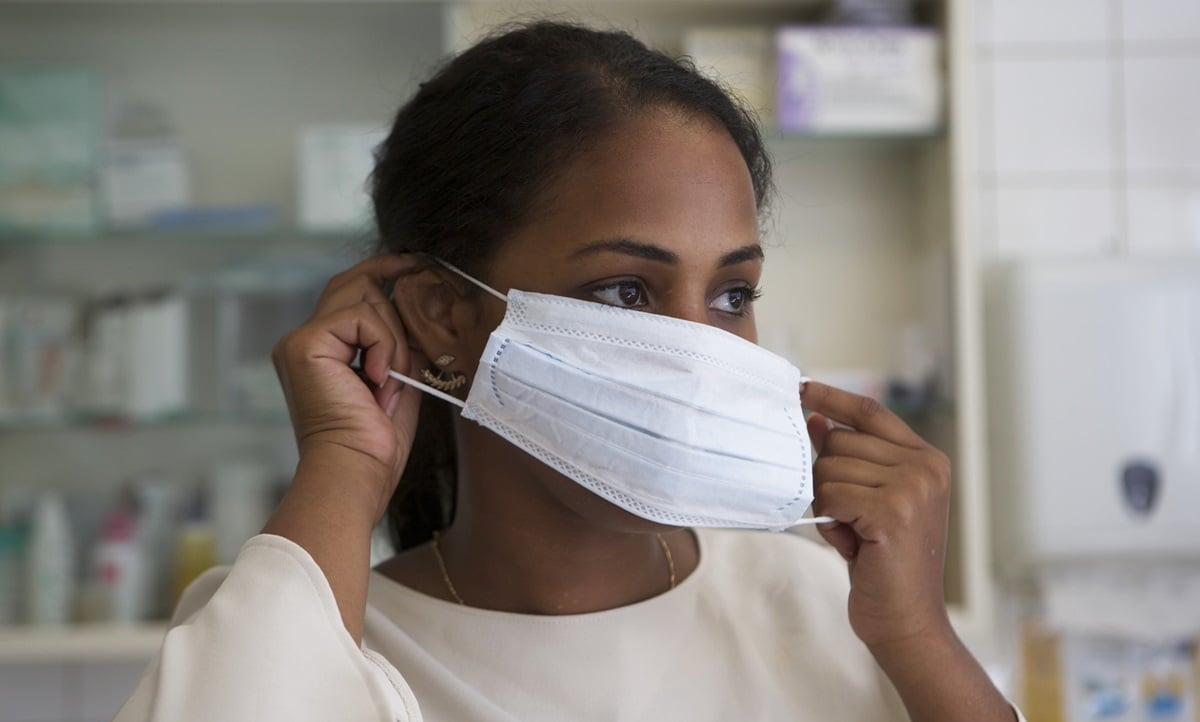
 who.int
who.int
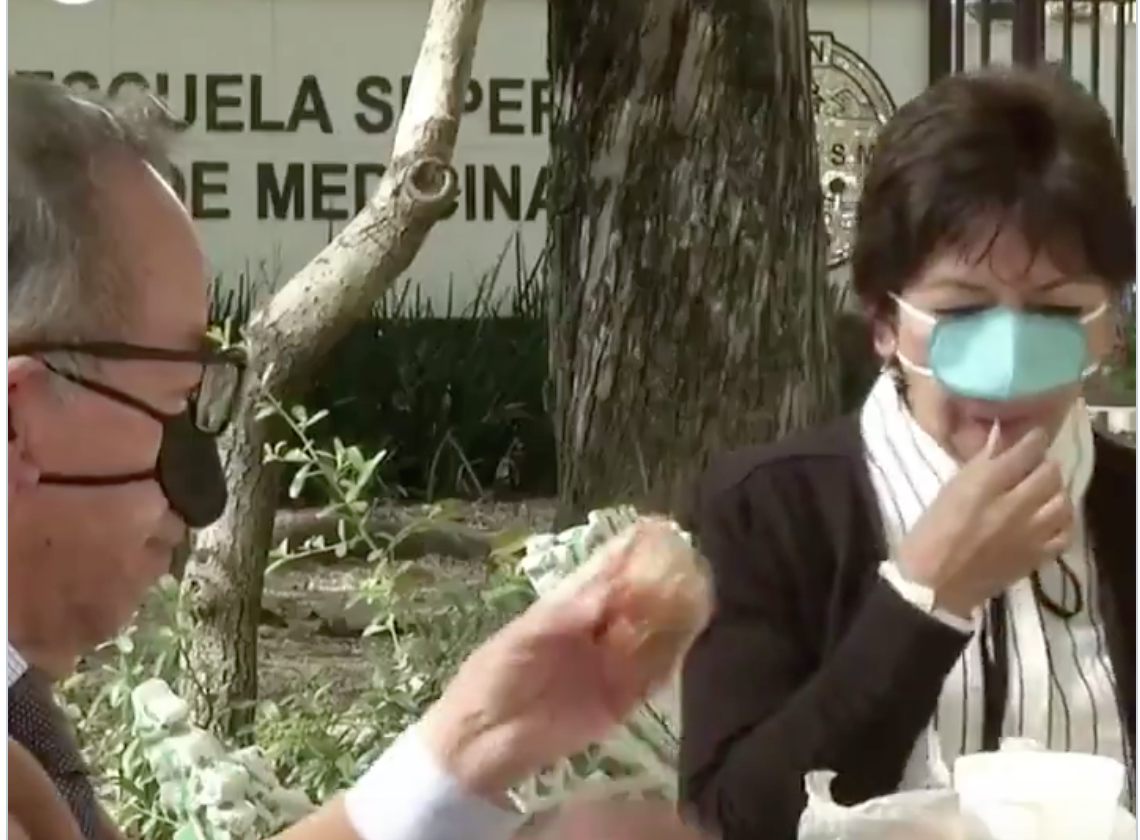
 torontosun.com
torontosun.com
Author of the article
Publishing date:Mar 25, 2021 • 1 hour ago • < 1 minute read • Join the conversation
A new COVID-19 mask you can wear while eating.
A new COVID-19 mask you can wear while eating. PHOTO BY TWITTER /CBS
Article content
The most recognizable Mexican masks belong to those of wrestlers, but there’s a new contender, researchers hope.
They’ve developed a mask designed to protect from COVID-19 while people are eating and drinking, The Hill reported.
Police say thieves used air casts, crutches to make cannabis store robbery getaway
Trackerdslogo
Advertisement
STORY CONTINUES BELOW
This advertisement has not loaded yet, but your article continues below.
Article content
In a clip on Twitter, a man and a woman are shown wearing the masks while sitting at a table to have a meal. They take off normal masks they were wearing on top of the other ones. They then eat and drink.
The World Health Organization recommends the public wear masks that provide coverage over the nose, mouth and chin, though.


When and how to use masks
WHO's guidance and advice on the use of masks to protect against and limit the spread of COVID-19.

Mexican mask designed to protect from COVID-19 while eating
The most recognizable Mexican masks belong to those of wrestlers, but there's a new contender, researchers hope.
Canada adds blood clot warning to AstraZeneca's COVID-19 vaccine
Author of the article:Reuters
Reuters
Publishing date:Mar 24, 2021 • 22 hours ago • 1 minute read • 6 Comments
In this file photo taken on September 11, 2020 Capped vials are being pictured during filling and packaging tests for the large-scale production and supply of the University of Oxfords COVID-19 vaccine candidate, AZD1222, on a high-performance aseptic vial filling line on September 11, 2020 at the Italian biologics manufacturing facility of multinational corporation Catalent in Anagni, southeast of Rome, during the COVID-19 infection, caused by the novel coronavirus.
In this file photo taken on September 11, 2020 Capped vials are being pictured during filling and packaging tests for the large-scale production and supply of the University of Oxfords COVID-19 vaccine candidate, AZD1222, on a high-performance aseptic vial filling line on September 11, 2020 at the Italian biologics manufacturing facility of multinational corporation Catalent in Anagni, southeast of Rome, during the COVID-19 infection, caused by the novel coronavirus. PHOTO BY VINCENZO PINTO /AFP via Getty Images
Article content
Canada’s health department on Wednesday continues to back AstraZeneca Plc’s COVID-19 vaccine even as it updated its label to provide information on rare blood clots associated with a low platelet count following an immunization shot.
Health Canada said it has not received any reports of these blood clots to date.
Canada, which is using AstraZeneca doses manufactured at the Serum Institute of India, has received 500,000 Covishield doses and expects to get 1.5 million more by May.
The warning label informs people to seek immediate medical attention if they develop shortness of breath, chest pain, leg swelling, or persistent abdominal pain following AstraZeneca shots.
“Also, seek immediate medical attention if you experience after a few days severe or persistent headaches or blurred vision, or experience skin bruising or pinpoint round spots beyond the site of vaccination that appears after a few days,” the label added.
However, the health department said it had assessed the available data and has determined that the vaccine has not been associated with an increase in the overall risk of thrombosis.
“Health Canada continues to be in regular contact with international regulators and the manufacturer of the AstraZeneca vaccine to review all evidence as it becomes available,” the department said in its statement.

 torontosun.com
torontosun.com
Author of the article:Reuters
Reuters
Publishing date:Mar 24, 2021 • 22 hours ago • 1 minute read • 6 Comments
In this file photo taken on September 11, 2020 Capped vials are being pictured during filling and packaging tests for the large-scale production and supply of the University of Oxfords COVID-19 vaccine candidate, AZD1222, on a high-performance aseptic vial filling line on September 11, 2020 at the Italian biologics manufacturing facility of multinational corporation Catalent in Anagni, southeast of Rome, during the COVID-19 infection, caused by the novel coronavirus.
In this file photo taken on September 11, 2020 Capped vials are being pictured during filling and packaging tests for the large-scale production and supply of the University of Oxfords COVID-19 vaccine candidate, AZD1222, on a high-performance aseptic vial filling line on September 11, 2020 at the Italian biologics manufacturing facility of multinational corporation Catalent in Anagni, southeast of Rome, during the COVID-19 infection, caused by the novel coronavirus. PHOTO BY VINCENZO PINTO /AFP via Getty Images
Article content
Canada’s health department on Wednesday continues to back AstraZeneca Plc’s COVID-19 vaccine even as it updated its label to provide information on rare blood clots associated with a low platelet count following an immunization shot.
Health Canada said it has not received any reports of these blood clots to date.
Canada, which is using AstraZeneca doses manufactured at the Serum Institute of India, has received 500,000 Covishield doses and expects to get 1.5 million more by May.
The warning label informs people to seek immediate medical attention if they develop shortness of breath, chest pain, leg swelling, or persistent abdominal pain following AstraZeneca shots.
“Also, seek immediate medical attention if you experience after a few days severe or persistent headaches or blurred vision, or experience skin bruising or pinpoint round spots beyond the site of vaccination that appears after a few days,” the label added.
However, the health department said it had assessed the available data and has determined that the vaccine has not been associated with an increase in the overall risk of thrombosis.
“Health Canada continues to be in regular contact with international regulators and the manufacturer of the AstraZeneca vaccine to review all evidence as it becomes available,” the department said in its statement.

Canada adds blood clot warning to AstraZeneca's COVID-19 vaccine
Canada’s health department on Wednesday continues to back AstraZeneca Plc’s COVID-19 vaccine even as it updated its label to provide information on rare blood clots…
Merkel rejects vote of confidence over Easter lockdown reversal
Author of the article:Reuters
Reuters
Holger Hansen
Publishing date:Mar 24, 2021 • 1 day ago • 3 minute read • 5 Comments
German Chancellor Angela Merkel puts her protective mask on during a plenum session of the lower house of parliament, the Bundestag, in Berlin, Germany, March 24, 2021.
German Chancellor Angela Merkel puts her protective mask on during a plenum session of the lower house of parliament, the Bundestag, in Berlin, Germany, March 24, 2021. PHOTO BY ANNEGRET HILSE /REUTERS
Article content
BERLIN — German Chancellor Angela Merkel on Wednesday rejected demands for a vote of confidence in her government over a U-turn on a circuit-breaker lockdown over Easter that compounded discontent with her handling of the coronavirus pandemic.
Merkel’s decision to ditch plans for an extended Easter holiday to try to break a third wave of COVID-19 agreed two days earlier during talks with governors of Germany’s 16 states raised concerns that she has lost her grip on the crisis.
Police say thieves used air casts, crutches to make cannabis store robbery getaway
Trackerdslogo
“No, I will not do that,” said Merkel, when asked about calls by all three opposition parties that she submit a vote of confidence. “I asked people today to forgive me for a mistake. This was the right thing to do, I believe. I also have the support of the whole federal government and parliament.”
Support for Merkel’s conservatives and their center-left Social Democrat (SPD) coalition partners is falling six months before a general election in which both parties are forecast to suffer record-low results.
Advertisement
STORY CONTINUES BELOW
This advertisement has not loaded yet, but your article continues below.
Article content
Germans, who in four successive elections had put their faith in her steady hands to guard their interests during the Greek debt euro zone financial crises, are growing frustrated with her inability to draw a clear path out of the pandemic.
Merkel, who will step down before the general election in September after four terms, agreed early this week to call on citizens to stay at home for five days over Easter.
The measure would have meant all stores, including essential ones, closing for an extra day on April 1.
The plan was welcomed by doctors and hospitals who fear rising infection numbers would stretch intensive care units that have been saving lives for more than a year. It was rejected by business groups who had hoped a lockdown in place since November would translate into a reopening over Easter.
Germany’s struggle to contain a second wave of the coronavirus that has now morphed into a third lies in stark contrast to its successful containment of the first outbreak early last year.
“The idea of an Easter shutdown was drafted with the best of intentions. We urgently need to stop and reverse the third wave,” Merkel told the news conference.
But it was not possible to implement the measures so quickly, Merkel said, apologizing for the added uncertainty that it had caused Germans.
“This mistake is mine alone,” said Merkel, setting a contrite tone only the second time in her 12 years as chancellor. “I ask all citizens for forgiveness.”
Advertisement
STORY CONTINUES BELOW
This advertisement has not loaded yet, but your article continues below.
Article content
In 2016, one year before a general election that won her a fourth term, she apologized during a conservative party conference for opening Germany’s doors in 2015 to almost one million migrants, mainly Muslim asylum seekers from Syria.
But Wednesday’s reversal and apology were not enough for some of her closest conservative allies.
Volker Bouffier, governor of the southern state of Hesse, told mass-selling Bild newspaper that the U-turn made the governing conservatives look like “fools.”
Germany, with a population of 83 million, reported 15,813 infections on Wednesday, an increase of some 2,000 from seven days ago, while the death toll rose by 248 to 75,212.
Deaths have fallen from earlier in the year when vaccinations had not begun, but admissions to intensive care units are creeping up and the seven-day incidence of cases per 100,000 – which the government has used as a metric to decide on lockdown steps – stands at 108 compared with 86 a week ago.
Unlike in highly centralized France, Germany’s federal system puts final say on matters of healthcare and security in the hands of state governors which has made it difficult for Merkel to forge uniform measures to contain the virus.
Germans have been largely supportive of lockdowns but a sluggish vaccination campaign, a face mask corruption scandal involving two conservative lawmakers and delays in test kit deliveries have been tearing at their patience.
Business lobby groups, including the HDE retail association, rallied behind Merkel’s decision to scrap the Easter lockdown.
Advertisement
STORY CONTINUES BELOW
This advertisement has not loaded yet, but your article continues below.
Article content
“The chancellor’s courageous decision demonstrates leadership,” said employers’ president Rainer Dulger. “There is no blueprint for managing this crisis.”
“I am convinced that we will beat the virus together,” Merkel said on Wednesday. “The path is difficult and rocky, and it is marked by successes but also by mistakes and setbacks. But the virus will slowly but surely become less scary.”
The left-leaning taz newspaper summed up the tough choices facing Merkel over the next six months with a front page showing the chancellor in a priest gown and a face mask carrying a wooden crucifix over her shoulder in an olive grove.
“Merkel Culpa,” read the headline. “Easter lockdown canceled. Chancellor shoulders the blame.”

 torontosun.com
torontosun.com
Author of the article:Reuters
Reuters
Holger Hansen
Publishing date:Mar 24, 2021 • 1 day ago • 3 minute read • 5 Comments
German Chancellor Angela Merkel puts her protective mask on during a plenum session of the lower house of parliament, the Bundestag, in Berlin, Germany, March 24, 2021.
German Chancellor Angela Merkel puts her protective mask on during a plenum session of the lower house of parliament, the Bundestag, in Berlin, Germany, March 24, 2021. PHOTO BY ANNEGRET HILSE /REUTERS
Article content
BERLIN — German Chancellor Angela Merkel on Wednesday rejected demands for a vote of confidence in her government over a U-turn on a circuit-breaker lockdown over Easter that compounded discontent with her handling of the coronavirus pandemic.
Merkel’s decision to ditch plans for an extended Easter holiday to try to break a third wave of COVID-19 agreed two days earlier during talks with governors of Germany’s 16 states raised concerns that she has lost her grip on the crisis.
Police say thieves used air casts, crutches to make cannabis store robbery getaway
Trackerdslogo
“No, I will not do that,” said Merkel, when asked about calls by all three opposition parties that she submit a vote of confidence. “I asked people today to forgive me for a mistake. This was the right thing to do, I believe. I also have the support of the whole federal government and parliament.”
Support for Merkel’s conservatives and their center-left Social Democrat (SPD) coalition partners is falling six months before a general election in which both parties are forecast to suffer record-low results.
Advertisement
STORY CONTINUES BELOW
This advertisement has not loaded yet, but your article continues below.
Article content
Germans, who in four successive elections had put their faith in her steady hands to guard their interests during the Greek debt euro zone financial crises, are growing frustrated with her inability to draw a clear path out of the pandemic.
Merkel, who will step down before the general election in September after four terms, agreed early this week to call on citizens to stay at home for five days over Easter.
The measure would have meant all stores, including essential ones, closing for an extra day on April 1.
The plan was welcomed by doctors and hospitals who fear rising infection numbers would stretch intensive care units that have been saving lives for more than a year. It was rejected by business groups who had hoped a lockdown in place since November would translate into a reopening over Easter.
Germany’s struggle to contain a second wave of the coronavirus that has now morphed into a third lies in stark contrast to its successful containment of the first outbreak early last year.
“The idea of an Easter shutdown was drafted with the best of intentions. We urgently need to stop and reverse the third wave,” Merkel told the news conference.
But it was not possible to implement the measures so quickly, Merkel said, apologizing for the added uncertainty that it had caused Germans.
“This mistake is mine alone,” said Merkel, setting a contrite tone only the second time in her 12 years as chancellor. “I ask all citizens for forgiveness.”
Advertisement
STORY CONTINUES BELOW
This advertisement has not loaded yet, but your article continues below.
Article content
In 2016, one year before a general election that won her a fourth term, she apologized during a conservative party conference for opening Germany’s doors in 2015 to almost one million migrants, mainly Muslim asylum seekers from Syria.
But Wednesday’s reversal and apology were not enough for some of her closest conservative allies.
Volker Bouffier, governor of the southern state of Hesse, told mass-selling Bild newspaper that the U-turn made the governing conservatives look like “fools.”
Germany, with a population of 83 million, reported 15,813 infections on Wednesday, an increase of some 2,000 from seven days ago, while the death toll rose by 248 to 75,212.
Deaths have fallen from earlier in the year when vaccinations had not begun, but admissions to intensive care units are creeping up and the seven-day incidence of cases per 100,000 – which the government has used as a metric to decide on lockdown steps – stands at 108 compared with 86 a week ago.
Unlike in highly centralized France, Germany’s federal system puts final say on matters of healthcare and security in the hands of state governors which has made it difficult for Merkel to forge uniform measures to contain the virus.
Germans have been largely supportive of lockdowns but a sluggish vaccination campaign, a face mask corruption scandal involving two conservative lawmakers and delays in test kit deliveries have been tearing at their patience.
Business lobby groups, including the HDE retail association, rallied behind Merkel’s decision to scrap the Easter lockdown.
Advertisement
STORY CONTINUES BELOW
This advertisement has not loaded yet, but your article continues below.
Article content
“The chancellor’s courageous decision demonstrates leadership,” said employers’ president Rainer Dulger. “There is no blueprint for managing this crisis.”
“I am convinced that we will beat the virus together,” Merkel said on Wednesday. “The path is difficult and rocky, and it is marked by successes but also by mistakes and setbacks. But the virus will slowly but surely become less scary.”
The left-leaning taz newspaper summed up the tough choices facing Merkel over the next six months with a front page showing the chancellor in a priest gown and a face mask carrying a wooden crucifix over her shoulder in an olive grove.
“Merkel Culpa,” read the headline. “Easter lockdown canceled. Chancellor shoulders the blame.”

Merkel rejects vote of confidence over Easter lockdown reversal
BERLIN — German Chancellor Angela Merkel on Wednesday rejected demands for a vote of confidence in her government over a U-turn on a circuit-breaker lockdown over E…
U.S. COVID response could have avoided 400,000 deaths: Research
Author of the article:Reuters
Reuters
Howard Schneider
Publishing date:Mar 25, 2021 • 12 hours ago • 3 minute read • 9 Comments
Lila Blanks reacts next to the casket of her husband, Gregory Blanks, 50, who died from complications from the coronavirus, ahead of his funeral in San Felipe, Texas, U.S., January 26, 2021.
Lila Blanks reacts next to the casket of her husband, Gregory Blanks, 50, who died from complications from the coronavirus, ahead of his funeral in San Felipe, Texas, U.S., January 26, 2021. PHOTO BY CALLAGHAN O'HARE /REUTERS
Article content
WASHINGTON — The United States squandered both money and lives in its response to the coronavirus pandemic, and it could have avoided nearly 400,000 deaths with a more effective health strategy and trimmed federal spending by hundreds of billions of dollars while still supporting those who needed it.
That is the conclusion of a group of research papers released at a Brookings Institution conference this week, offering an early and broad start to what will likely be an intense effort in coming years to assess the response to the worst pandemic in a century.
U.S. COVID-19 fatalities could have stayed under 300,000, versus a death toll of 540,000 and rising, if by last May the country had adopted widespread mask, social distancing, and testing protocols while awaiting a vaccine, estimated Andrew Atkeson, economics professor at University of California, Los Angeles.
He likened the state-by-state, patchwork response to a car’s cruise control. As the virus worsened people hunkered down, but when the situation improved restrictions were dropped and people were less careful, with the result that “the equilibrium level of daily deaths … remains in a relatively narrow band” until the vaccine arrived.
Advertisement
STORY CONTINUES BELOW
This advertisement has not loaded yet, but your article continues below.
Article content
Atkeson projected a final fatality level of around 670,000 as vaccines spread and the crisis subsides. The outcome, had no vaccine been developed, would have been a far-worse 1.27 million, Atkeson estimated.
The economic response, while mammoth, also could have been better tailored, argued University of California, Berkeley economics professor Christine Romer. She joins former Treasury Secretary Lawrence Summers and several others from the last two Democratic administrations in criticizing the spending authorized since last spring, including the Biden team’s $1.9 trillion American Rescue Plan.
While she said the federal government’s more than $5 trillion in pandemic-related spending won’t likely trigger a fiscal crisis, she worries that higher-priority investments will be deferred because of allocations to initiatives like the Paycheck Protection Program.
Those forgivable small business loans were “an interesting and noble experiment,” but were also “problematic on many levels,” including an apparent cost of hundreds of thousands of dollars for each job saved, she said.
“Spending on programs such as unemployment compensation and public heath was exactly what was called for,” she wrote, but other aspects, particularly the generous one-time payments to families, were “largely ineffective and wasteful.”
“If something like the $1 trillion spent on stimulus payments that did little to help those most affected by the pandemic ends up precluding spending $1 trillion on infrastructure or climate change in the next few years, the United States will have made a very bad bargain indeed,” Romer wrote.
Advertisement
STORY CONTINUES BELOW
This advertisement has not loaded yet, but your article continues below.
Article content
Biden administration officials, including Treasury Secretary Janet Yellen, argue the full package was needed to be sure all workers and families are kept economically intact until the job market recovers.
In a separate paper, Minneapolis Federal Reserve researchers Krista Ruffini and Abigail Wozniak concluded the federal programs largely did what they intended by supporting income and spending, with the impact seen in how consumption changed in response to the approval and lapse of different government payments.
But they also found room for improvement.
Evidence of the PPP’s effectiveness in job retention, for example, was “mixed,” they found, and increases in food assistance didn’t account for things like higher grocery prices.
“Food insecurity remained elevated throughout 2020,” they noted.
The aim now, they said, should be on determining what worked in order to make the response to any similar crisis more effective.
“The 2020 social insurance system response had many successes,” they said. “Given the scope and scale of the pandemic response, it is critical we continue to evaluate these efforts to understand the full extent of their reach, which populations were helped, who was left out.”

 torontosun.com
torontosun.com
Author of the article:Reuters
Reuters
Howard Schneider
Publishing date:Mar 25, 2021 • 12 hours ago • 3 minute read • 9 Comments
Lila Blanks reacts next to the casket of her husband, Gregory Blanks, 50, who died from complications from the coronavirus, ahead of his funeral in San Felipe, Texas, U.S., January 26, 2021.
Lila Blanks reacts next to the casket of her husband, Gregory Blanks, 50, who died from complications from the coronavirus, ahead of his funeral in San Felipe, Texas, U.S., January 26, 2021. PHOTO BY CALLAGHAN O'HARE /REUTERS
Article content
WASHINGTON — The United States squandered both money and lives in its response to the coronavirus pandemic, and it could have avoided nearly 400,000 deaths with a more effective health strategy and trimmed federal spending by hundreds of billions of dollars while still supporting those who needed it.
That is the conclusion of a group of research papers released at a Brookings Institution conference this week, offering an early and broad start to what will likely be an intense effort in coming years to assess the response to the worst pandemic in a century.
U.S. COVID-19 fatalities could have stayed under 300,000, versus a death toll of 540,000 and rising, if by last May the country had adopted widespread mask, social distancing, and testing protocols while awaiting a vaccine, estimated Andrew Atkeson, economics professor at University of California, Los Angeles.
He likened the state-by-state, patchwork response to a car’s cruise control. As the virus worsened people hunkered down, but when the situation improved restrictions were dropped and people were less careful, with the result that “the equilibrium level of daily deaths … remains in a relatively narrow band” until the vaccine arrived.
Advertisement
STORY CONTINUES BELOW
This advertisement has not loaded yet, but your article continues below.
Article content
Atkeson projected a final fatality level of around 670,000 as vaccines spread and the crisis subsides. The outcome, had no vaccine been developed, would have been a far-worse 1.27 million, Atkeson estimated.
The economic response, while mammoth, also could have been better tailored, argued University of California, Berkeley economics professor Christine Romer. She joins former Treasury Secretary Lawrence Summers and several others from the last two Democratic administrations in criticizing the spending authorized since last spring, including the Biden team’s $1.9 trillion American Rescue Plan.
While she said the federal government’s more than $5 trillion in pandemic-related spending won’t likely trigger a fiscal crisis, she worries that higher-priority investments will be deferred because of allocations to initiatives like the Paycheck Protection Program.
Those forgivable small business loans were “an interesting and noble experiment,” but were also “problematic on many levels,” including an apparent cost of hundreds of thousands of dollars for each job saved, she said.
“Spending on programs such as unemployment compensation and public heath was exactly what was called for,” she wrote, but other aspects, particularly the generous one-time payments to families, were “largely ineffective and wasteful.”
“If something like the $1 trillion spent on stimulus payments that did little to help those most affected by the pandemic ends up precluding spending $1 trillion on infrastructure or climate change in the next few years, the United States will have made a very bad bargain indeed,” Romer wrote.
Advertisement
STORY CONTINUES BELOW
This advertisement has not loaded yet, but your article continues below.
Article content
Biden administration officials, including Treasury Secretary Janet Yellen, argue the full package was needed to be sure all workers and families are kept economically intact until the job market recovers.
In a separate paper, Minneapolis Federal Reserve researchers Krista Ruffini and Abigail Wozniak concluded the federal programs largely did what they intended by supporting income and spending, with the impact seen in how consumption changed in response to the approval and lapse of different government payments.
But they also found room for improvement.
Evidence of the PPP’s effectiveness in job retention, for example, was “mixed,” they found, and increases in food assistance didn’t account for things like higher grocery prices.
“Food insecurity remained elevated throughout 2020,” they noted.
The aim now, they said, should be on determining what worked in order to make the response to any similar crisis more effective.
“The 2020 social insurance system response had many successes,” they said. “Given the scope and scale of the pandemic response, it is critical we continue to evaluate these efforts to understand the full extent of their reach, which populations were helped, who was left out.”

U.S. COVID response could have avoided 400,000 deaths: Research
WASHINGTON — The United States squandered both money and lives in its response to the coronavirus pandemic, and it could have avoided nearly 400,000 deaths with a m…
New modelling shows COVID counts, severity indicators are back on rise
Author of the article:Canadian Press
Canadian Press
Publishing date:Mar 26, 2021 • 4 hours ago • 4 minute read • 11 Comments
Chief Public Health Officer Dr. Theresa Tam attends a news conference in Ottawa, March 23, 2020.
Chief Public Health Officer Dr. Theresa Tam attends a news conference in Ottawa, March 23, 2020. PHOTO BY BLAIR GABLE /REUTERS / FILES
Article content
Federal officials are “anxious” over new modelling showing an increase in daily COVID-19 cases, which they say comes at a bad time with several religious holidays nearing, and people wanting to gather with families.
Data shows severity indicators and daily cases are back on the rise as variants of the virus continue to spread in parts of the country, with incidence highest among young adults.
Approaching spring holidays may make spread tougher to contain, says Canada’s chief public health officer, noting that the country also saw a sharp rise in cases following Christmas.
Dr. Theresa Tam says daily cases have increased more than 30 per cent over the past two weeks, with an average of 29 deaths reported daily.
The Jewish holiday of Passover is this weekend while Easter follows a week later. Ramadan, the Muslim holy month of fasting, begins April 13.
“Every time we hit a holiday period, we’re always a bit anxious,” Tam said in a press conference Friday. “Passover, Easter, Ramadan, (these are) times when families and churches and other gatherings typically occur.”
Advertisement
STORY CONTINUES BELOW
This advertisement has not loaded yet, but your article continues below.
Article content
Tam says rising cases indicate we’re in a “very tight race” between vaccines and variants of concern, which make up an increasingly high proportion of new cases in several provinces.
All six provinces west of the Atlantic region are currently experiencing, or likely to experience, a resurgence in cases “in the coming days and weeks,” she noted, adding that jurisdictions need to clamp down on rapid spread quickly.
“We want to make sure (holiday gathering) does not happen right now,” she said. “(It’s) not the time.”
The data released Friday by the Public Health Agency of Canada shows that while the number of cases has declined in Canadians aged 80 and older, incidence rates are highest among young adults aged 20 to 39.
Tam says infections among younger, more mobile and social age groups pose an ongoing risk for spread into high-risk populations.
Some of the decrease in incidence rates among older Canadians is a result of vaccine efforts, Tam said.
Canada administered more than 190,000 vaccines on Thursday, the most since the rollout began in mid-December, and 11 per cent of the country’s adult population has now received at least one dose.
Procurement Minister Anita Anand said Friday that Canada was seeing a surge in deliveries that’s expected to continue, despite recent export restrictions from the European Union.
Anand says six million more doses of COVID vaccines are scheduled to flow into Canada over the next three weeks, matching the six million doses that have arrived in the country since the approval of the first vaccine in December.
Advertisement
STORY CONTINUES BELOW
This advertisement has not loaded yet, but your article continues below.
Article content
“We are closely monitoring the global environment, including export restrictions in a number of jurisdictions,” Anand said. “Our officials across numerous departments as well as our suppliers are working ahead of time to ensure that Canada’s vaccines continue to arrive in our country.”
Despite the surge in vaccine supply, Ontario Premier Doug Ford expressed continued frustration with his province’s stock from the federal government.
He said Ontario has received word that a shipment of Moderna doses expected this week will not arrive until next week.
“I’ve been very complimentary and collaborative with the federal government, but enough’s enough,” he said. “This is becoming a joke. We need more vaccines.”
Ford also slammed the federal government for not providing enough information about the arrival date of further Oxford-AstraZeneca shots expected soon.
Anand announced earlier Friday, however, that 1.5 million doses of AstraZeneca, procured in a deal with the United States, are scheduled to arrive Tuesday.
Anand also said Moderna has upped its delivery frequency from every three weeks to every two weeks, and reiterated that “at least” one million Pfizer-BioNTech shots will be arriving in Canada every week through the end of May.
The influx in vaccines comes as variants continue to spread across the country, however.
Tam said more than 7,100 cases of variants of concern have been reported across Canada, with B.1.1.7, first identified in the U.K., making up 90 per cent of those cases.
Advertisement
STORY CONTINUES BELOW
This advertisement has not loaded yet, but your article continues below.
Article content
Tam cited data from Ontario that she says shows the B.1.1.7 variant has led to a 60 per cent increase in hospitalizations, 100 per cent increase in ICU admissions and a 60 per cent increase in the risk of death.
“These severity indicators can be seen across all age groups of the adult population,” Tam said. “It is a very important set of information that should drive home to all of us why it is important to maintain these (restrictive) measures.”
The Ontario Hospital Association said Friday that the third wave is threatening the province’s ICU capacity as the number of severely ill patients approaches a previous peak.
Meanwhile, Quebec’s government-mandated public health institute says more transmissible variants will represent the majority of new infections in the province by the first week of April.
Some provinces have recently loosened restrictions despite rising variant activity, including Ontario, which increased its indoor dining capacity to 50 people in most regions and will allow hair salons and outdoor fitness classes to reopen in regions that are under lockdown.
Quebec reopened gyms in parts of the province on Friday, and places of worship in those areas are allowed once again to welcome up to 250 people indoors.
Manitoba this week also announced the limit on outdoor gatherings is to go up to 25 people from 10, and a 50 per cent capacity rule for retail outlets is to max out at 500 people rather than 250.
Tam says there’s “merit” in provinces taking regional approaches with their restrictions, but notes that “up-and-down measures” may not be the best way to combat spread.
“If there are detections that this activity is ramping up, then definitely don’t relax,” she said. “Try and keep that even keel until the vaccines have gained much more of acceleration in terms of coverage.”
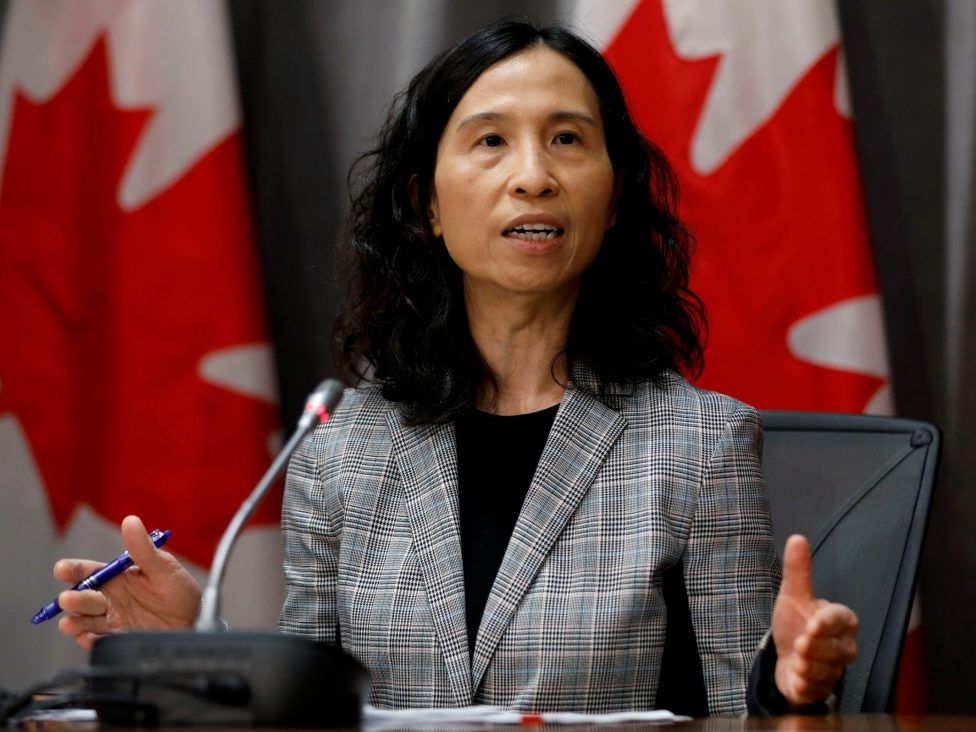
 torontosun.com
torontosun.com
Author of the article:Canadian Press
Canadian Press
Publishing date:Mar 26, 2021 • 4 hours ago • 4 minute read • 11 Comments
Chief Public Health Officer Dr. Theresa Tam attends a news conference in Ottawa, March 23, 2020.
Chief Public Health Officer Dr. Theresa Tam attends a news conference in Ottawa, March 23, 2020. PHOTO BY BLAIR GABLE /REUTERS / FILES
Article content
Federal officials are “anxious” over new modelling showing an increase in daily COVID-19 cases, which they say comes at a bad time with several religious holidays nearing, and people wanting to gather with families.
Data shows severity indicators and daily cases are back on the rise as variants of the virus continue to spread in parts of the country, with incidence highest among young adults.
Approaching spring holidays may make spread tougher to contain, says Canada’s chief public health officer, noting that the country also saw a sharp rise in cases following Christmas.
Dr. Theresa Tam says daily cases have increased more than 30 per cent over the past two weeks, with an average of 29 deaths reported daily.
The Jewish holiday of Passover is this weekend while Easter follows a week later. Ramadan, the Muslim holy month of fasting, begins April 13.
“Every time we hit a holiday period, we’re always a bit anxious,” Tam said in a press conference Friday. “Passover, Easter, Ramadan, (these are) times when families and churches and other gatherings typically occur.”
Advertisement
STORY CONTINUES BELOW
This advertisement has not loaded yet, but your article continues below.
Article content
Tam says rising cases indicate we’re in a “very tight race” between vaccines and variants of concern, which make up an increasingly high proportion of new cases in several provinces.
All six provinces west of the Atlantic region are currently experiencing, or likely to experience, a resurgence in cases “in the coming days and weeks,” she noted, adding that jurisdictions need to clamp down on rapid spread quickly.
“We want to make sure (holiday gathering) does not happen right now,” she said. “(It’s) not the time.”
The data released Friday by the Public Health Agency of Canada shows that while the number of cases has declined in Canadians aged 80 and older, incidence rates are highest among young adults aged 20 to 39.
Tam says infections among younger, more mobile and social age groups pose an ongoing risk for spread into high-risk populations.
Some of the decrease in incidence rates among older Canadians is a result of vaccine efforts, Tam said.
Canada administered more than 190,000 vaccines on Thursday, the most since the rollout began in mid-December, and 11 per cent of the country’s adult population has now received at least one dose.
Procurement Minister Anita Anand said Friday that Canada was seeing a surge in deliveries that’s expected to continue, despite recent export restrictions from the European Union.
Anand says six million more doses of COVID vaccines are scheduled to flow into Canada over the next three weeks, matching the six million doses that have arrived in the country since the approval of the first vaccine in December.
Advertisement
STORY CONTINUES BELOW
This advertisement has not loaded yet, but your article continues below.
Article content
“We are closely monitoring the global environment, including export restrictions in a number of jurisdictions,” Anand said. “Our officials across numerous departments as well as our suppliers are working ahead of time to ensure that Canada’s vaccines continue to arrive in our country.”
Despite the surge in vaccine supply, Ontario Premier Doug Ford expressed continued frustration with his province’s stock from the federal government.
He said Ontario has received word that a shipment of Moderna doses expected this week will not arrive until next week.
“I’ve been very complimentary and collaborative with the federal government, but enough’s enough,” he said. “This is becoming a joke. We need more vaccines.”
Ford also slammed the federal government for not providing enough information about the arrival date of further Oxford-AstraZeneca shots expected soon.
Anand announced earlier Friday, however, that 1.5 million doses of AstraZeneca, procured in a deal with the United States, are scheduled to arrive Tuesday.
Anand also said Moderna has upped its delivery frequency from every three weeks to every two weeks, and reiterated that “at least” one million Pfizer-BioNTech shots will be arriving in Canada every week through the end of May.
The influx in vaccines comes as variants continue to spread across the country, however.
Tam said more than 7,100 cases of variants of concern have been reported across Canada, with B.1.1.7, first identified in the U.K., making up 90 per cent of those cases.
Advertisement
STORY CONTINUES BELOW
This advertisement has not loaded yet, but your article continues below.
Article content
Tam cited data from Ontario that she says shows the B.1.1.7 variant has led to a 60 per cent increase in hospitalizations, 100 per cent increase in ICU admissions and a 60 per cent increase in the risk of death.
“These severity indicators can be seen across all age groups of the adult population,” Tam said. “It is a very important set of information that should drive home to all of us why it is important to maintain these (restrictive) measures.”
The Ontario Hospital Association said Friday that the third wave is threatening the province’s ICU capacity as the number of severely ill patients approaches a previous peak.
Meanwhile, Quebec’s government-mandated public health institute says more transmissible variants will represent the majority of new infections in the province by the first week of April.
Some provinces have recently loosened restrictions despite rising variant activity, including Ontario, which increased its indoor dining capacity to 50 people in most regions and will allow hair salons and outdoor fitness classes to reopen in regions that are under lockdown.
Quebec reopened gyms in parts of the province on Friday, and places of worship in those areas are allowed once again to welcome up to 250 people indoors.
Manitoba this week also announced the limit on outdoor gatherings is to go up to 25 people from 10, and a 50 per cent capacity rule for retail outlets is to max out at 500 people rather than 250.
Tam says there’s “merit” in provinces taking regional approaches with their restrictions, but notes that “up-and-down measures” may not be the best way to combat spread.
“If there are detections that this activity is ramping up, then definitely don’t relax,” she said. “Try and keep that even keel until the vaccines have gained much more of acceleration in terms of coverage.”

New modelling shows COVID counts, severity indicators are back on rise
Federal officials are “anxious” over new modelling showing an increase in daily COVID-19 cases, which they say comes at a bad time with several religious holidays n…
At least nine COVID patients dead in Mumbai hospital fire
Author of the article:Reuters
Reuters
Publishing date:Mar 26, 2021 • 11 hours ago • 1 minute read • Join the conversation
Smoke billows after a fire broke out at a hospital in Mumbai, India, March 26, 2021.
Smoke billows after a fire broke out at a hospital in Mumbai, India, March 26, 2021. PHOTO BY STRINGER /REUTERS
Article content
MUMBAI — At least nine coronavirus patients died in a fire that engulfed a mall housing a hospital in Mumbai, authorities said on Friday.
Rescue workers were still working to douse the fire, which took place past midnight on Friday in an eastern suburb of the city, authorities said, adding that more than 70 patients had been evacuated to other coronavirus facilities.
Television visuals showed smoke billowing out of the premises as rescue operations were underway and officials said eleven bodies had been pulled out of the building so far.
“At least nine of the 11 died of suffocation, and it looks like two had died of COVID just before the fire broke out. We are still awaiting confirmation on these two,” a local government official, who declined to be identified because he is not authorized to speak to the media, told Reuters.
The cause of the fire was not immediately known and was under investigation, the official said.
Advertisement
STORY CONTINUES BELOW
This advertisement has not loaded yet, but your article continues below.
Article content
India’s financial capital is struggling through the worst phase of its COVID-19 pandemic, and reported more than 5,500 cases on Thursday, its highest daily number since the outbreak began.
Hospitals around the city are struggling to keep up with the new surge of patients and local officials have said they are bracing for higher numbers in the coming days.
India’s new coronavirus infections rose 59,118 overnight, the highest daily rise since Oct. 18, health ministry data showed on Friday.
The country’s overall caseload stood at 11.85 million.
India reported 257 new deaths from coronavirus, taking the overall tally to 160,949, the data showed.

 torontosun.com
torontosun.com
Author of the article:Reuters
Reuters
Publishing date:Mar 26, 2021 • 11 hours ago • 1 minute read • Join the conversation
Smoke billows after a fire broke out at a hospital in Mumbai, India, March 26, 2021.
Smoke billows after a fire broke out at a hospital in Mumbai, India, March 26, 2021. PHOTO BY STRINGER /REUTERS
Article content
MUMBAI — At least nine coronavirus patients died in a fire that engulfed a mall housing a hospital in Mumbai, authorities said on Friday.
Rescue workers were still working to douse the fire, which took place past midnight on Friday in an eastern suburb of the city, authorities said, adding that more than 70 patients had been evacuated to other coronavirus facilities.
Television visuals showed smoke billowing out of the premises as rescue operations were underway and officials said eleven bodies had been pulled out of the building so far.
“At least nine of the 11 died of suffocation, and it looks like two had died of COVID just before the fire broke out. We are still awaiting confirmation on these two,” a local government official, who declined to be identified because he is not authorized to speak to the media, told Reuters.
The cause of the fire was not immediately known and was under investigation, the official said.
Advertisement
STORY CONTINUES BELOW
This advertisement has not loaded yet, but your article continues below.
Article content
India’s financial capital is struggling through the worst phase of its COVID-19 pandemic, and reported more than 5,500 cases on Thursday, its highest daily number since the outbreak began.
Hospitals around the city are struggling to keep up with the new surge of patients and local officials have said they are bracing for higher numbers in the coming days.
India’s new coronavirus infections rose 59,118 overnight, the highest daily rise since Oct. 18, health ministry data showed on Friday.
The country’s overall caseload stood at 11.85 million.
India reported 257 new deaths from coronavirus, taking the overall tally to 160,949, the data showed.

At least nine COVID patients dead in Mumbai hospital fire
MUMBAI — At least nine coronavirus patients died in a fire that engulfed a mall housing a hospital in Mumbai, authorities said on Friday.
'Stronger' measures needed across Canada to suppress COVID-19 resurgence: Tam
Author of the article:Canadian Press
Canadian Press
Publishing date:Mar 27, 2021 • 2 hours ago • 2 minute read • 22 Comments
Chief Public Health Officer Dr. Theresa Tam puts on a mask at a news conference held to discuss COVID-19 in Ottawa, Nov. 6, 2020.
Chief Public Health Officer Dr. Theresa Tam puts on a mask at a news conference held to discuss COVID-19 in Ottawa, Nov. 6, 2020. PHOTO BY PATRICK DOYLE /REUTERS / FILES
Article content
OTTAWA — Canada’s chief public health officer warned Saturday that current health orders are not enough to stop rapid growth of COVID-19, as provinces push ahead with plans to reopen their economies.
Longer-range forecast models predict a resurgence of COVID-19 infections unless public health measures are enhanced and strictly followed, Dr. Theresa Tam said in a written statement.
“With increasing circulation of highly contagious variants, the threat of uncontrolled epidemic growth is significantly elevated,” she said.
Tam said public health orders across Canada need to be stronger, stricter and sustained long enough to control the rise of variants of concern.
High infection rates in the most populous provinces are driving up the country’s average daily case counts, she said.
Quebec reported more than 1,000 new infections on Saturday for the first time since mid-February, a day after the province reopened gyms and spas in red zones, including Montreal.
Advertisement
STORY CONTINUES BELOW
This advertisement has not loaded yet, but your article continues below.
Article content
The province’s government-mandated public health institute also warned on Friday that more transmissible variants would represent the majority of infections in Quebec by the first week of April.
Premier Francois Legault told reporters he wasn’t ready to reverse decisions to reopen gyms or to allow places of worship to welcome up to 250 people.
In Ontario, new cases topped 2,400 for the first time since January.
The Registered Nurses Association of Ontario released a statement Saturday urging Premier Doug Ford to scale back reopening plans, including the scheduled reopening of personal care services, such as hair salons, on April 12 in regions of the province that are in “grey-lockdown” zones.
The province’s own modelling projections indicate highly contagious variants could see daily case counts balloon, while COVID-19 patients are already occupying Ontario’s intensive care beds at levels “well above the threshold at which hospitals say they can cope,” the statement said.
Gyms in Ontario will be allowed to offer outdoor fitness classes and personal training in the lockdown zones starting Monday. Earlier changes allowed outdoor restaurant dining to resume in those zones, including Toronto, and increased indoor capacity limits for restaurants in other regions.
British Columbia reported 908 new COVID-19 infections on Friday, among the highest daily totals in that province since the pandemic began.
Provincial health officer Dr. Bonnie Henry announced Thursday she would ease restrictions on visits to long-term care homes, where most staff and residents have been vaccinated.
Limited indoor religious services will also be allowed starting Sunday through May 13 to allow for the observation of holidays including Passover, Easter and Ramadan.
In Alberta, rising hospitalization rates and variant cases have delayed reopening plans that would have included relaxed restrictions on worship services, entertainment venues and adult team sports.

 torontosun.com
torontosun.com
Author of the article:Canadian Press
Canadian Press
Publishing date:Mar 27, 2021 • 2 hours ago • 2 minute read • 22 Comments
Chief Public Health Officer Dr. Theresa Tam puts on a mask at a news conference held to discuss COVID-19 in Ottawa, Nov. 6, 2020.
Chief Public Health Officer Dr. Theresa Tam puts on a mask at a news conference held to discuss COVID-19 in Ottawa, Nov. 6, 2020. PHOTO BY PATRICK DOYLE /REUTERS / FILES
Article content
OTTAWA — Canada’s chief public health officer warned Saturday that current health orders are not enough to stop rapid growth of COVID-19, as provinces push ahead with plans to reopen their economies.
Longer-range forecast models predict a resurgence of COVID-19 infections unless public health measures are enhanced and strictly followed, Dr. Theresa Tam said in a written statement.
“With increasing circulation of highly contagious variants, the threat of uncontrolled epidemic growth is significantly elevated,” she said.
Tam said public health orders across Canada need to be stronger, stricter and sustained long enough to control the rise of variants of concern.
High infection rates in the most populous provinces are driving up the country’s average daily case counts, she said.
Quebec reported more than 1,000 new infections on Saturday for the first time since mid-February, a day after the province reopened gyms and spas in red zones, including Montreal.
Advertisement
STORY CONTINUES BELOW
This advertisement has not loaded yet, but your article continues below.
Article content
The province’s government-mandated public health institute also warned on Friday that more transmissible variants would represent the majority of infections in Quebec by the first week of April.
Premier Francois Legault told reporters he wasn’t ready to reverse decisions to reopen gyms or to allow places of worship to welcome up to 250 people.
In Ontario, new cases topped 2,400 for the first time since January.
The Registered Nurses Association of Ontario released a statement Saturday urging Premier Doug Ford to scale back reopening plans, including the scheduled reopening of personal care services, such as hair salons, on April 12 in regions of the province that are in “grey-lockdown” zones.
The province’s own modelling projections indicate highly contagious variants could see daily case counts balloon, while COVID-19 patients are already occupying Ontario’s intensive care beds at levels “well above the threshold at which hospitals say they can cope,” the statement said.
Gyms in Ontario will be allowed to offer outdoor fitness classes and personal training in the lockdown zones starting Monday. Earlier changes allowed outdoor restaurant dining to resume in those zones, including Toronto, and increased indoor capacity limits for restaurants in other regions.
British Columbia reported 908 new COVID-19 infections on Friday, among the highest daily totals in that province since the pandemic began.
Provincial health officer Dr. Bonnie Henry announced Thursday she would ease restrictions on visits to long-term care homes, where most staff and residents have been vaccinated.
Limited indoor religious services will also be allowed starting Sunday through May 13 to allow for the observation of holidays including Passover, Easter and Ramadan.
In Alberta, rising hospitalization rates and variant cases have delayed reopening plans that would have included relaxed restrictions on worship services, entertainment venues and adult team sports.

'Stronger' measures needed across Canada to suppress COVID-19 resurgence: Tam
OTTAWA — Canada’s chief public health officer warned Saturday that current health orders are not enough to stop rapid growth of COVID-19, as provinces push ahead wi…

